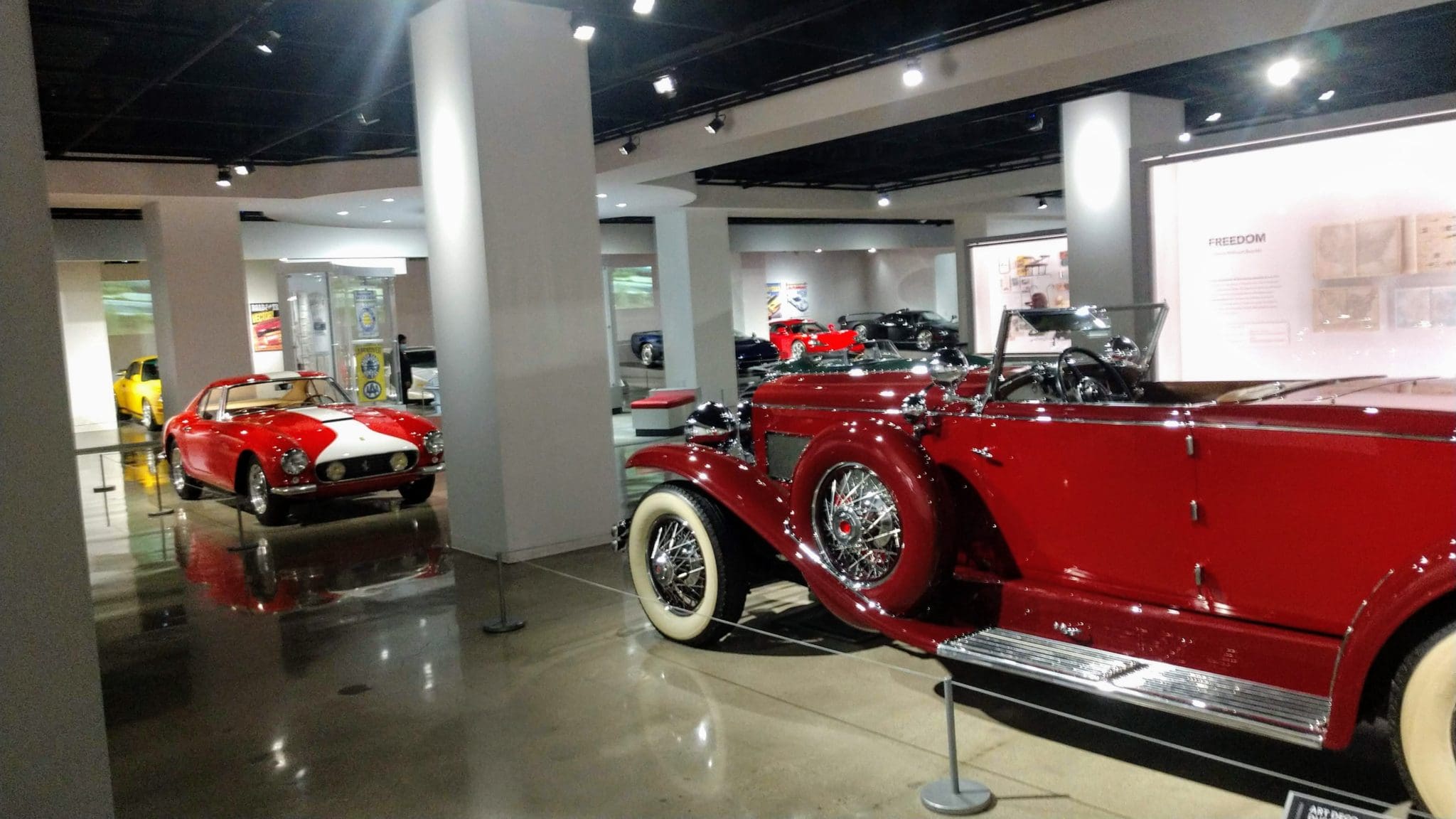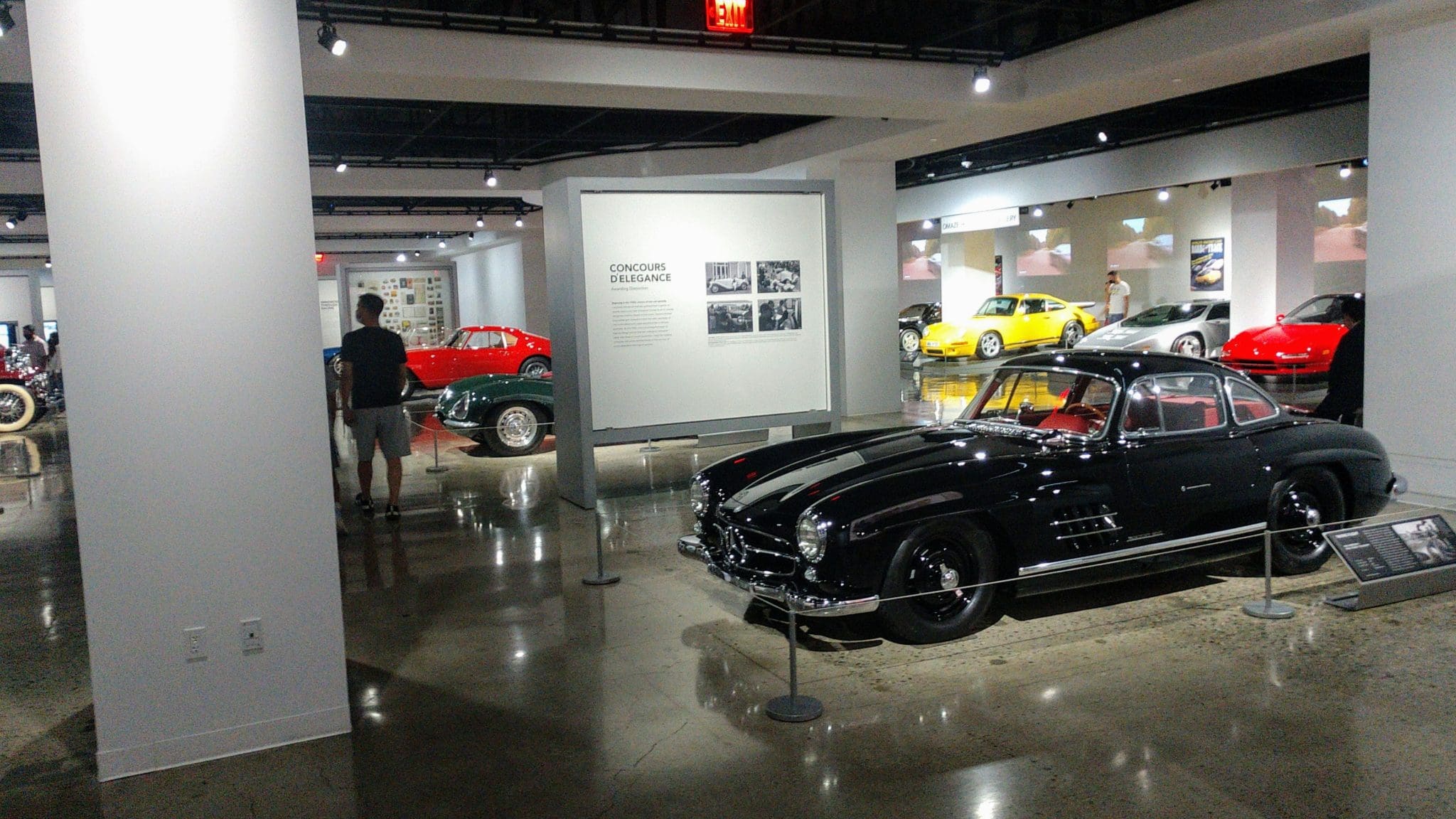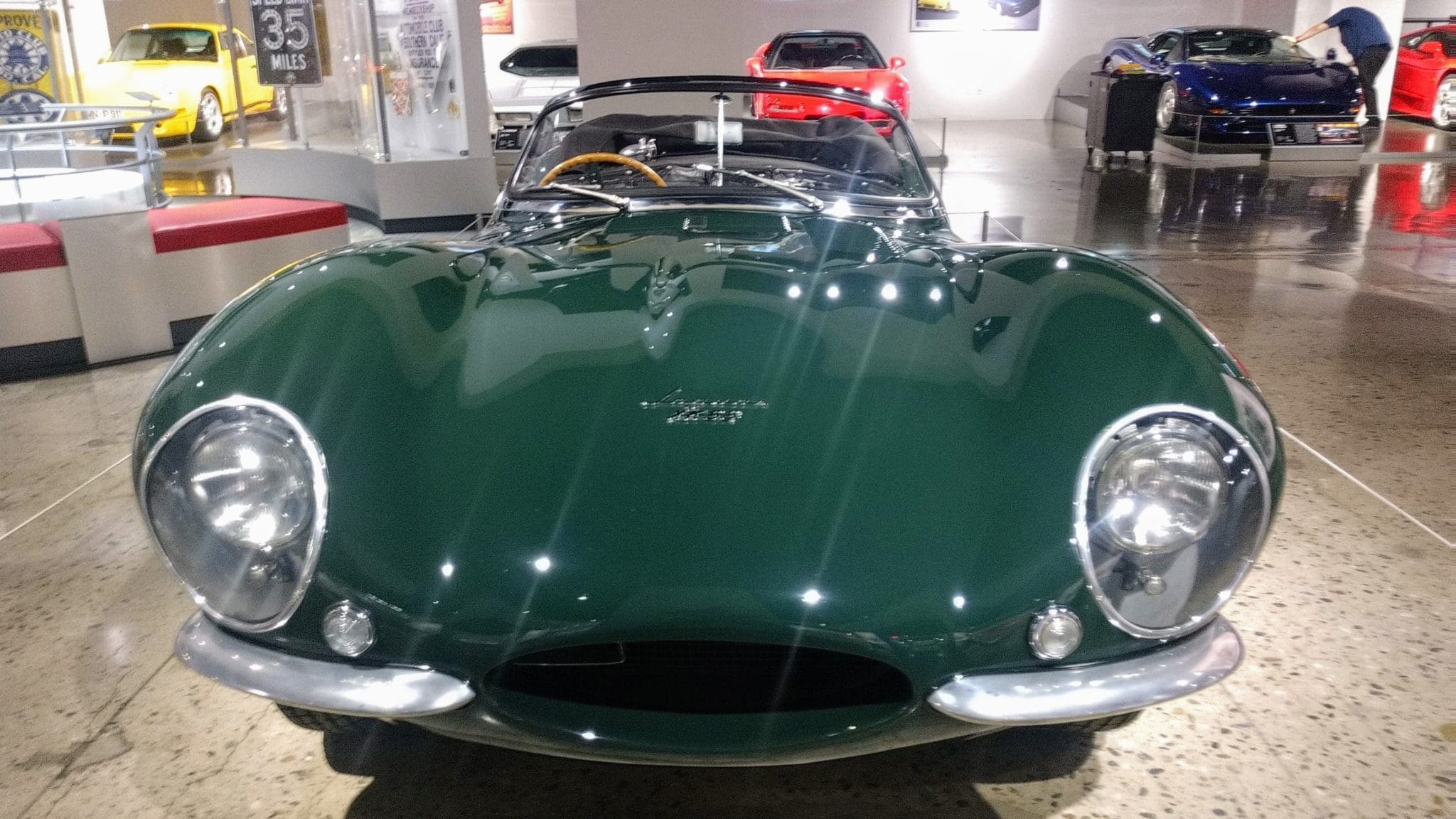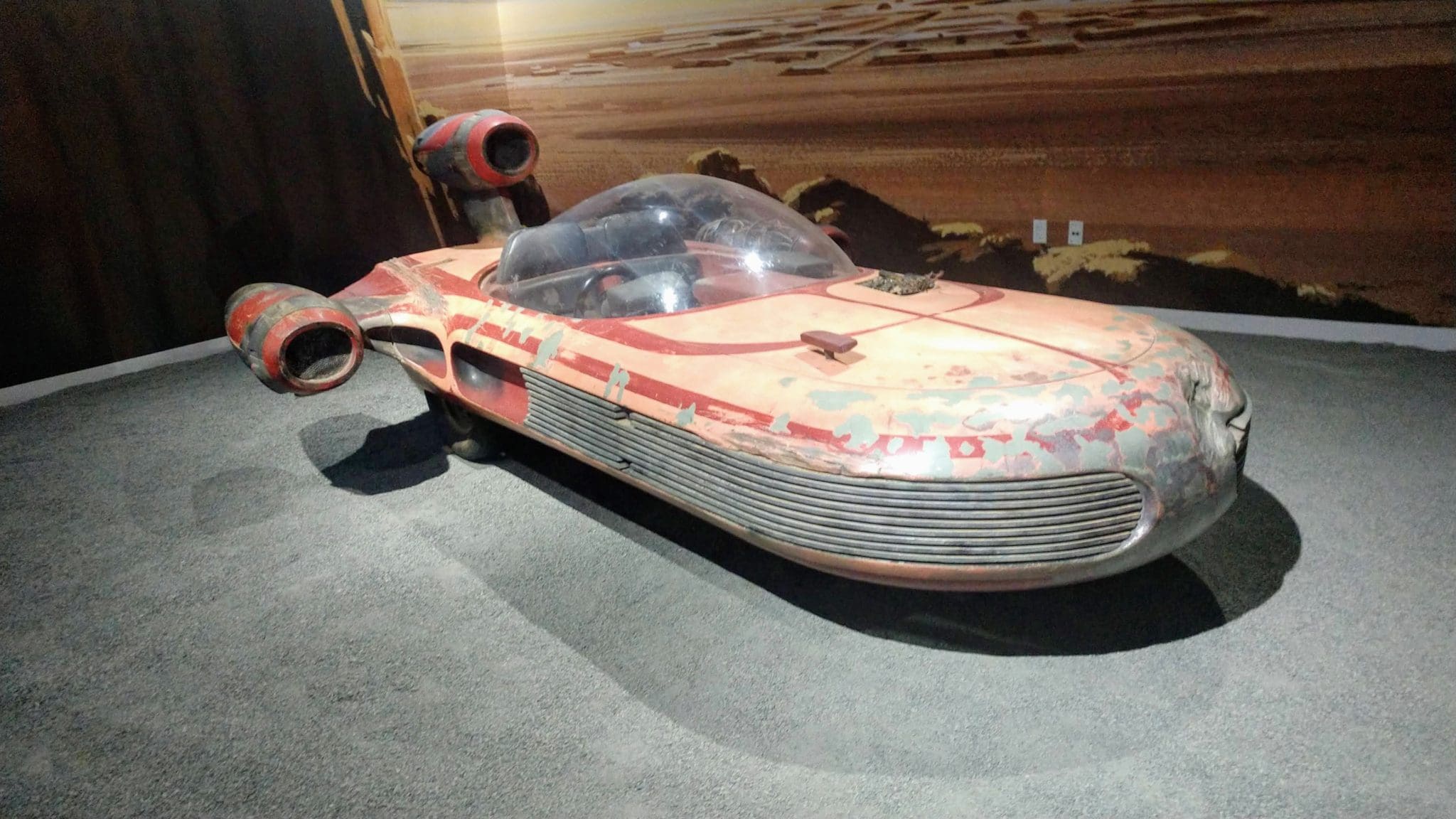Road Trip to the Petersen Museum
Road tripped from San Antonio, Texas to LA to visit a temporary museum exhibit and spend the day at the Petersen Museum.
The museum’s primary focus is racing vehicles, with a concentration of NASCAR Sprint, Modified, Super Modified, and Midget race cars. Founded by vintner and car aficionado Richard “Dick” Woodland, the collection also includes numerous well-known vintage and classic automobiles, along with preserved historical motorcycles. The Woodland Auto Display is located on the grounds of the Estrella Warbirds Museum. It is home to a vast collection of military artifacts, aircraft, vehicles, and memorabilia.
4251 Dry Creek Rd
Paso Robles, CA 93446
P: 805-238-9317
Email: woodlandautodisplay@gmail.com
Entrance to both museums is through the Gift Shop at Estrella Warbirds Museum. Admission (includes entrance to both Estrella Warbirds Museum and Woodland Auto Display):
One Day/ Pass Two Day Pass
Adult $18 / $24
Senior (60+) $12 / $24
Student (w/ID) $10 / $15
Child (6-12) $8 / $12
Child (0-5) Free / Free
Military Veteran $12 / $18
Active Duty (w/ID) Free / Free
Plan: 2+hr
Thursday – Sunday 10am – 4pm
Image via https://www.facebook.com/woodlandautodisplay/
.
Road tripped from San Antonio, Texas to LA to visit a temporary museum exhibit and spend the day at the Petersen Museum.
It is also home to the incredible Woodland Automobile Display, one of the finest collections of vintage, classic, and racing vehicles!
The Jeep Willys was a mass-produced small four-wheel-drive car that was first built in 1941 by Willys-Overland Motors
automotive museum guide
Sign up to get updates about automotive museums right to your mailbox. Don't miss a thing. It's FREE.
The Jeep Willys was a mass-produced small four-wheel-drive car that was first built in 1941 by Willys-Overland Motors. The design of the Jeep Willys has been credited to Karl Probst, who was an engineer at Willys-Overland.
The Jeep Willys was used extensively by the United States military during World War II and the Korean War. After the war, the Jeep Willys became popular with civilians as a utility vehicle.
If you’re lucky enough to own a 1942 Willys Jeep, you can be proud to know that you’re driving a piece of history.
From July 1940, the U.S Army was looking for a versatile vehicle that could be 4WD and carry at least 3 people. Additionally, it would rather have an 80’’ wheelbase, and be able to go 50mph on roads with a minimum weight of 1,300lbs.
At that time, there were three companies that joined the competition: Willys-Overland Motors, Ford Motor Company, and Bantam Car Company. However, the unexpected small Bantam Car Company is the one that met the requirements. And, the U.S government worried that this company would not provide enough vehicles as requested. As a result, they contacted Ford and Willys for support on Jeep production.
Willys-Overland produced the MA (Model “A”) and Ford made the Jeep GP. By July 1941, the U.S government troops loved the “Go-Devil” engine of Willys, so they chose it as a standard model. Ford Motor and Bantam Car Company cooperated in producing Willys MB (the Model “B”) with concluding all the best features.
However, the “Jeep” was not called by these three manufacturers. There are some hypotheses about this name. Some say it is a spoonerism of the word GP; while some say that it was inspired by a character from a cartoon called Popeye.
During World War II, approximately 363,000 were built by Willys and another 280,000 by Ford. The Jeep became the primary light 4-wheel-drive vehicle of the United States Army and Allies during World War II, as well as the postwar period.
Did you know that thanks to Jeep’s height advantage, Jeeps are a great choice for winter driving because they have superior visibility? They also come equipped with all sorts of safety features that will keep you safe on the roads during this time!
Moreover, the Willys Jeep was an instant success, with its rugged 4×4 capabilities and compact size making it perfect for off-road use. The Jeep quickly became essential to the Allied war effort, with over 360,000 being built during World War II. The Jeep Willys is also known as the first military off-roader.
The Jeep’s versatility meant it was used in a variety of roles, from carrying troops to towing artillery. It even saw action as an ambulance and a command car. The Jeep’s wartime service is a testament to its strength and durability, making it a true icon of the 20th century.
The first bid accepted by the Army was for a vehicle with four-wheel drive, a crew of three onboard, and specifications that it has: no more than 75 inches long chassis (or less), 47 inch wide tracks plus 1,200 pounds maximum load capacity. The engine should also provide 85 ft-lbs/115 Nm torque without exceeding 1,350 lbs weight which makes the 1942 Jeep Willy the perfect military truck!
Below are some outstanding specifications of 1942 Jeep Willys MB
Miles Through Time Automotive Museum
Image via Trent Cherry
.
Road tripped from San Antonio, Texas to LA to visit a temporary museum exhibit and spend the day at the Petersen Museum.
It is also home to the incredible Woodland Automobile Display, one of the finest collections of vintage, classic, and racing vehicles!
The Jeep Willys was a mass-produced small four-wheel-drive car that was first built in 1941 by Willys-Overland Motors
automotive museum guide
Sign up to get updates about automotive museums right to your mailbox. Don't miss a thing. It's FREE.
Okay, the honest truth is I did not drive all the way from my home in San Antonio to Los Angeles just to see the Petersen Automotive Museum. I actually came to see another exhibit, a temporary one, at another museum, one that has nothing to do with cars.
But, hey, why waste the trip?
The Petersen Museum, the unofficial Home Base for American automotive culture, is always a Must-See automotive museum. Located on the corner of Wilshire Boulevard and Fairfax Avenue, the Petersen anchors the western end of the Miracle Mile.

That name seems to mean something particular to Angelinos, but not to me. I’m more impressed by the striking design of the museum’s building, a repurposed department store wrapped now in a voluptuous steel skin that makes it the architectural focal point of the area, even more than the Motion Picture Academy’s weird new Death-Star-shaped theater, hiding behind their museum across the street. Once you see the Petersen — or the Death Star Theater, for that matter — you never forget it.
Like most car museums, the Petersen doesn’t have room to display its entire collection at one time. There are two ways to deal with this problem. Many museums cram in all the cars they can, and visitors have to be satisfied with standing by a bumper and looking over the body from there. Maybe the other end of the car can be glimpsed from the next crowded row.
 Better museums (and I use that designation intentionally) display fewer cars, making it possible to walk all the way around each one, to see inside, to appreciate the arrangement of controls and gauges, the line of the fender, the slope of the windshield, the styling of the door handle.
Better museums (and I use that designation intentionally) display fewer cars, making it possible to walk all the way around each one, to see inside, to appreciate the arrangement of controls and gauges, the line of the fender, the slope of the windshield, the styling of the door handle.
On today’s visit, my second time at the Petersen, I stepped off the elevator to begin my visit with a 1924 Mercedes Targa Florio. This is the oldest Mercedes I’ve ever seen, and it looked odd. Designed to serve either as a road car or a racer, the floorboard features a couple of oddities. One, according to a docent, enabled the passenger to dump gasoline, to lighten the car in a race. (The passenger envisioned was the driver’s mechanic; I’ve never had a passenger I would trust with such power.)
 The Mercedes was an introduction to the theme of the current top-floor display, having to do with the relationship between racing and the more sedate everyday driving we mainly do. It includes “supercars,” an ad-speak term that used to mean style, grace, and power but now is coming to mean only pointless horsepower that appeals to immature boys of every age and a price tag that appeals only to those with more dollars than sense.
The Mercedes was an introduction to the theme of the current top-floor display, having to do with the relationship between racing and the more sedate everyday driving we mainly do. It includes “supercars,” an ad-speak term that used to mean style, grace, and power but now is coming to mean only pointless horsepower that appeals to immature boys of every age and a price tag that appeals only to those with more dollars than sense.
Personally, I fit only one of those categories.) The exhibition also includes other, less exotic but hardly more “normal” vehicles, from the 1913 Mercer Raceabout to the 1967 AC Shelby Cobra, the 1933 Deusenburg SJ convertible to the 1955 Jaguar XKSS, the very one that Steve McQueen used to irritate the neighbors with as he drove through LA’s canyons. (According to the knowledgeable docent keeping an eye on the floor, that car was the loudest one he had ever heard, when it was moved onto the floor for display.)
 In a particularly interesting juxtaposition, a 1952 Ferrari Inter Barchetta Superleggero (super-light-weight) roadster sat facing a Mercedes-Benz 1955 SL (for SuperLeicht) gull-wing coupe, in the same jet-black skin. Two distinct cars, both beautiful, and both tremendously important, in different ways, to the designs of so much that came after.
In a particularly interesting juxtaposition, a 1952 Ferrari Inter Barchetta Superleggero (super-light-weight) roadster sat facing a Mercedes-Benz 1955 SL (for SuperLeicht) gull-wing coupe, in the same jet-black skin. Two distinct cars, both beautiful, and both tremendously important, in different ways, to the designs of so much that came after.
Being in Los Angeles, it’s natural that the Petersen should be well-known for a collection of movie and TV-related cars. They used to be on the top floor, and perhaps will be again after the current show; the signs showing their location up there haven’t been removed, though nobody seemed the least bit confused about it.
 Those cars — the ones currently on display, at least — are currently on the first floor, in an exhibition focussed on cars used in fantasy movies. The kids will love it, even if they’re not familiar with the movies. (I certainly did.)
Those cars — the ones currently on display, at least — are currently on the first floor, in an exhibition focussed on cars used in fantasy movies. The kids will love it, even if they’re not familiar with the movies. (I certainly did.)
There are, of course, the required Batmobiles — three of ‘em, if I remember right; plus cars and car-like vehicles used in futuristic movies like Blade Runner and Minority Report. And there’s the holy-of-holies, Luke Skywalker’s ground speeder from Star Wars Episode IV: A New Hope. The one he left behind a long time ago in a galaxy far, far away.
The ground floor also contains an exhibition dedicated to the work of Pinin Farina, one of the great Italian automotive design studios. The centerpiece of that exhibit is the beautiful 1953 Nash-Healey convertible, though other beautiful designs, from Alfa Romeos and Ferraris to a coffee maker, were also featured. I admit I didn’t spend much time admiring the coffee maker, but I think I took way too many pictures of the Nash-Healey
 I made the mistake of believing online recommendations to expect to spend one-and-a-half to two hours at the Petersen. That didn’t leave me time to see the display on the second floor, dealing with engineering development and alternative fuels; a quick walk-through was all I could manage, but other than a new play area for kids and a few different exemplars of notable engineering developments, I had seen this exhibit in great detail the last time I was here. I would say that if you’re going to go to the Petersen, plan to spend around three hours there. It should be worth it.
I made the mistake of believing online recommendations to expect to spend one-and-a-half to two hours at the Petersen. That didn’t leave me time to see the display on the second floor, dealing with engineering development and alternative fuels; a quick walk-through was all I could manage, but other than a new play area for kids and a few different exemplars of notable engineering developments, I had seen this exhibit in great detail the last time I was here. I would say that if you’re going to go to the Petersen, plan to spend around three hours there. It should be worth it.
The museum has its own parking garage, with entrances on Fairfax Avenue and on 8th Street, at the back of the building. There’s also some metered parking in the area, but those are limited to two hours and, to be honest, most of the meters are so poorly maintained that you won’t be able to tell how much you’re spending.

The Petersen Museum also offers access to its “vault,” the parts of its collection not presently on display in the museum proper. I haven’t seen it, but from descriptions and photographs of it, those cars are lined up bumper-to-bumper. But there are more than two hundred of them, so it’s a trade-off.
Photo credit Passepartout22
Automotive Museum Guide Contributor
Road tripped from San Antonio, Texas to LA to visit a temporary museum exhibit and spend the day at the Petersen Museum.
It is also home to the incredible Woodland Automobile Display, one of the finest collections of vintage, classic, and racing vehicles!
The Jeep Willys was a mass-produced small four-wheel-drive car that was first built in 1941 by Willys-Overland Motors
automotive museum guide
Sign up to get updates about automotive museums right to your mailbox. Don't miss a thing. It's FREE.